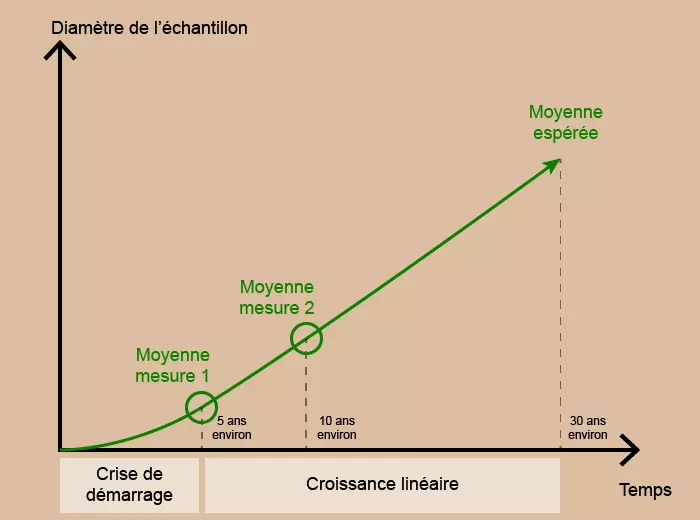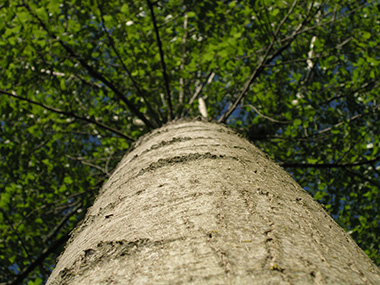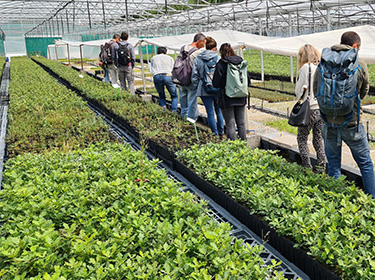Presentation
DIAFNOSTIC
Enter a few measurements of a timber species, and you will read an estimate of their future DIAmetres in their agroforestry plot (in rows or hedges).
-
Objectives
By measuring the trunk circumference of a few young trees once or twice, you can estimate when their wood can be harvested.
-
The users
The future of wood from rural trees concerns farmers, agroforestry advisors, students and teachers of agronomy.
-
Method
Use a simple form on your computer or smartphone.
-
Results
Once the data has been entered, the calculations are performed. A summary and the data can be downloaded to your space. If you have chosen to share your results, they will appear in a public table.
The online tool
Open a personal space. To familiarise yourself with the tool, fill in a form and choose the "Test" option!
Objectives
Service evaluation
First measurement, first indications
 Measuring the circumference of 10 to 30 trees after their start-up crisis enables us to estimate the minimum average 10 to 30 years later.
Measuring the circumference of 10 to 30 trees after their start-up crisis enables us to estimate the minimum average 10 to 30 years later.
There is no doubt that there will be a shortage of wood in the future, but it is impossible to translate this into euros. However, the results, provided in the form of exploitable diameters, give an idea of the potential income.
Second, more precise measurement, estimation of ecosystem services
 After at least three years, a second measurement provides a more realistic estimate of the indicative number of trees to be cut 10 to 30 years later.
After at least three years, a second measurement provides a more realistic estimate of the indicative number of trees to be cut 10 to 30 years later.
Growth in diameter is an indication of the volume of the tree: trunk, but also crown and roots. This volume is proportional to many ecosystem services provided by the tree.
Exceptional tree
Le signaler
 If you spot an exceptional tree (growing well, flowering well for my bees, seems to be more resistant to drought, etc.), you can
If you spot an exceptional tree (growing well, flowering well for my bees, seems to be more resistant to drought, etc.), you can
- report it,
- share a photo
- measure it to see how it compares with its neighbours.
It will appear anonymously in the collective results table showing averages and exceptional trees.
Copy my exceptional tree
Why?
You want to duplicate a few specimens of your exceptional tree for yourself or someone else.
the only solution: cuttings!
Collecting seeds doesn't allow you to reproduce the genetic qualities of an exceptional tree, because only half of its genetic heritage passes through each seed. Taking cuttings, on the other hand, allows the tree to be reproduced identically, but in no way guarantees the expression of its genetic potential.
In fact, you may be disappointed with the result, because growth is the result of genetic potential and local circumstances, in unknown proportions. For example, a genetically unsuitable tree may give the illusion of being exceptional if it has benefited from a privileged location, such as a large pocket of earth created by the filling in of an old ditch.
Conversely, a copy of an exceptional tree planted in a very unfavourable area will not express its genetic potential. Other characteristics are less subject to micro-environmental variations, such as late budburst or branch shape.
How?
For best results, it's best to choose a young tree. Note that most "deciduous" trees (not conifers) can be cut.
You can also delegate the operation to nurserymen who will take small quantities of cuttings.
Info
If you know of a nurseryman or hobbyist willing to cut small quantities of a young tree for a farmer, please let us know at frederique.santi [@] inrae.fr, and they will be added to the list.
Users
Producers
Farmer
You have hedgerows or agroforestry lines where some species grow well. How long will it be before their trunks exceed 35 or 50 cm in diameter and generate an income?
Create an account and fill in the form in test mode to see what kind of results you could get.
Forester
A DIAFnostic feature may be of interest to you: Report an exceptional tree in an even-aged forest plot.
To assess the potential remarkable growth of an exceptional tree compared with its congeners, you enter the measurements of your tree and those of a representative sample of its neighbours of the same species in the form. The results obtained will validate or invalidate its superiority.
Please note that the growth estimates obtained are meaningless because trees in the forest are in competition with each other. Make a note of FORESTPARCEL in the field "comments for the exceptional tree".
If you would rather report a group of trees that are exceptional in the sense that they are unusual in this area, a web application developed by the ONF will soon be available.
Technicians
Agroforestry advisor
When I visit farmers' plots, I can spend some time measuring around fifteen trees. The average values can be used to create future agroforestry projects, both my own and those of my colleagues.
If I'm planning a new plot in a similar environment, I can use these average values in the EcoAF agroforestry plot simulation tool on CAPSIS.
Teachers and students
Thanks to the accumulated or newly measured data, I can more easily integrate the economic benefits of trees in the medium term into the wider framework of agro-ecological changes in agricultural plots.
